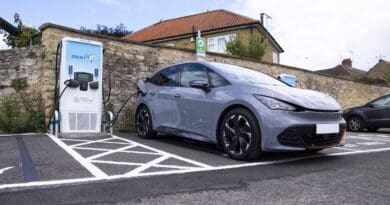Mixed-Use Properties and Their Unique Potential
Investing in property improvements can yield both immediate and long-term benefits—from attracting quality tenants to boosting resale value.
According to a 2023 Real Estate Improvement Survey, nearly 45% of property owners plan to add eco-friendly features or amenities in the next three years, highlighting the growing focus on forward-thinking enhancements. Below are practical ways to elevate any type of property, whether you own commercial space, residential units, or a mixed-use complex.
Tenant Improvement Allowance: The Basics
For properties with tenants, one way to fund upgrades is through a tenant improvement allowance (TIA). This financial support, often negotiated at lease signing, helps defray the costs of custom build-outs or renovations. For instance, a restaurant tenant might use TIA for adding upgraded kitchen appliances, while an office tenant could channel it into modernizing meeting rooms. Structuring a fair allowance ensures tenants move into a space tailored to their business, ultimately increasing lease satisfaction and reducing turnover. A 2022 Commercial Leasing Report found that 40% of businesses were more likely to extend their lease if TIA covered at least half of their initial renovation costs, showcasing how a well-crafted allowance can foster longer, more stable relationships with tenants.
Mixed-Use Properties and Their Unique Potential
For those managing or investing in mixed-use developments—spaces that combine residential, commercial, and sometimes even retail under one roof—improvement strategies often require a balanced approach. Creating communal areas that cater to diverse groups can deepen a sense of community and push foot traffic for on-site businesses. A well-designed lobby featuring local artwork or comfortable seating can serve as both a social hub for residents and a waiting area for commercial visitors. Because mixed-use projects juggle multiple income streams, they can also be more resilient to market fluctuations, making them a favorable choice for owners looking to diversify. A 2023 Urban Housing Study reported that mixed-use buildings typically experienced 15% lower vacancy rates compared to single-purpose properties, highlighting the appeal of an integrated lifestyle for today’s tenants and customers.
Future-Proofing with EV Chargers
In an era of rising electric vehicle adoption, installing EV chargers can significantly enhance property value and tenant satisfaction. According to a 2022 Automotive Trends Review, EV sales rose by 28% worldwide, driving growing demand for convenient charging solutions. Whether you manage an office park or a residential complex, offering charging stations shows forward-thinking and positions your property as eco-conscious. EV charging setups can range from basic Level 2 chargers to more robust fast-charging stations, depending on the needs of your tenants or clientele. Grants or local tax incentives sometimes help offset installation costs, making it a win-win for both property owners and the environment.
Where to Install an EV Charger: Key Considerations
When adding an EV charger, placement can make or break its usefulness. Consider the following:
- Proximity to Electrical Panels: Shorter cable runs typically reduce installation costs and complexity.
- Parking Layout: Ensure chargers are easily accessible, ideally reserved for EVs, so other cars don’t block the spots.
- Safety and Lighting: Provide adequate illumination and clear signage for after-dark usage.
- Potential for Expansion: If demand grows, leaving space for additional chargers can prevent future headaches.
- Visibility: In commercial settings, placing chargers near entrances or high-traffic areas can promote the amenity, inviting more users.
Factoring in these details ensures a smoother install, saving you time and money while better serving the people who rely on the charger daily.
Comparing Commercial and Residential Upgrades
When it comes to improvements, commercial and residential properties each have unique priorities. Commercial buildings might focus on boosting curb appeal through updated façades or introducing advanced HVAC systems for energy efficiency. Residential owners, on the other hand, could see higher returns from upgrading kitchens and bathrooms or adding communal amenities—like a shared laundry room or rooftop deck. Regardless of property type, data consistently shows that quality-of-life enhancements, from natural lighting to better insulation, resonate with occupants. The 2022 Rental Market Insights indicated that 61% of residents favored landlords who invested in meaningful property upgrades, reinforcing how targeted renovations can drive loyalty and long-term occupancy.
Incorporating Modern Signage and Décor in Commercial Spaces
Another angle for commercial upgrades involves updating the interior with eye-catching signage or decorative elements—like neon signs—to enhance both brand appeal and tenant satisfaction. A well-placed neon logo or stylized accent can help a retail store or lobby stand out, drawing attention to a particular feature or tenant brand. In fact, a 2023 Commercial Décor Insights survey found that 74% of business owners saw an increase in customer engagement when they installed new decorative lighting or signage. Whether it’s highlighting a reception desk in an office building or promoting a café within a mixed-use property, thoughtful design additions can transform a plain space into a destination with personality and flair.
Maintaining Long-Term Value
Finally, don’t forget to keep an eye on maintenance and ongoing property assessments. Whether you’ve installed new energy-efficient windows, retiled communal areas, or introduced an EV charging station, each upgrade requires periodic inspections to maintain functionality and safety standards. Regularly surveying tenant or resident feedback can also shed light on whether additions like a rooftop garden or enhanced security systems are worth pursuing. By blending strategic improvements with continuous attention to occupant needs, property owners foster a more loyal tenant base and preserve high-quality spaces that stand out in a competitive market.






